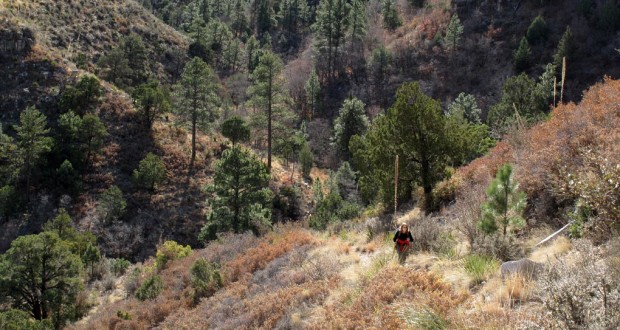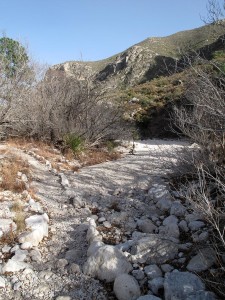Guadalupe Mountains National Park not only lives in the shadow of Big Bend, but many popular state parks as well. It’s hidden away on the New Mexico border due north of Van Horn.
But in Texas, you can’t get any higher than the park’s Guadalupe Peak, which rises 8,751 feet, and for the geologically inclined, the park sits atop an impressive prehistoric reef. For the rest of us, there are 80 miles of trails through rugged canyons and sweeping valleys where you’ll run into fewer homo sapiens than you will in most other parks. And if that’s not enough, Carlsbad Caverns is just a few miles away.
Here are a few of the park’s more interesting trails:
- Guadalupe Peak Trail (8.4 miles roundtrip) A steep, strenuous trail that skirts cliff edges and climbs 3,000 feet to the top of Texas.
- Devil’s Hall Trail (4.2 miles roundtrip) A moderate hike along the rocky streambed of Pine Springs Canyon, through a woodland of pine, maple and ash, up a rock staircase to a narrow cut in the surrounding limestone.
- El Capitan (11.3 miles roundtrip) A loop through Chihuahuan desert and grassy scrub to the foot of El Capitan, a towering outcrop of the massive prehistoric reef that underlies the park.
- The Bowl (9.1 miles roundtrip) A steep hike up to ridges and canyons blanketed in pine and Douglas fir.
- McKittrick Canyon Trail (7-10.2 miles roundtrip) This is two trails in one. The first is a pleasant, relatively flat stroll through the valley of McKittrick Canyon, intertwined with a desert stream. The second is probably the toughest stretch in the park, climbing 2,600 feet up the side of the canyon.
- Dog Canyon-Lost Peak-McKittrick Canyon – (8-14.8 miles roundtrip) Rolling hills and sweeping valleys give way to rugged peaks on this remote hike that combines some of the most dramatic scenery from Dog Canyon and its nearby sibling, McKittrick Canyon.
The park’s desert, woodlands, mountains and streams attract an unusual diversity of wildlife, from fox, coyotes and mountain lions to mule deer, elk, black bear and 16 species of bats.
Almost 300 species of birds visit the park, both residents and migrants traveling the Chihuahuan desert. Desert visitors include the Black-chinned Sparrow, Canyon Towhee and Loggerhead Shrike. The valleys host Western, Summer and Hepatic Tanagers, Wilson’s and Grace’s Warblers and Plumbeous Vireos. The mountain forests attract Acorn Woodpeckers, Mountain Chickadees, Bushtits and Pine Siskins.
• • •










